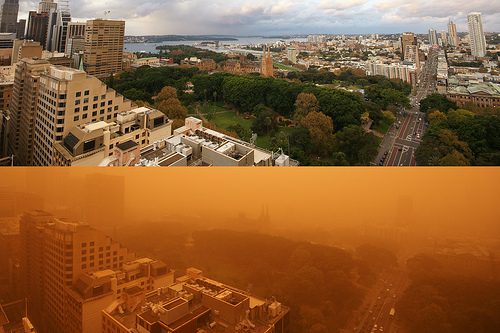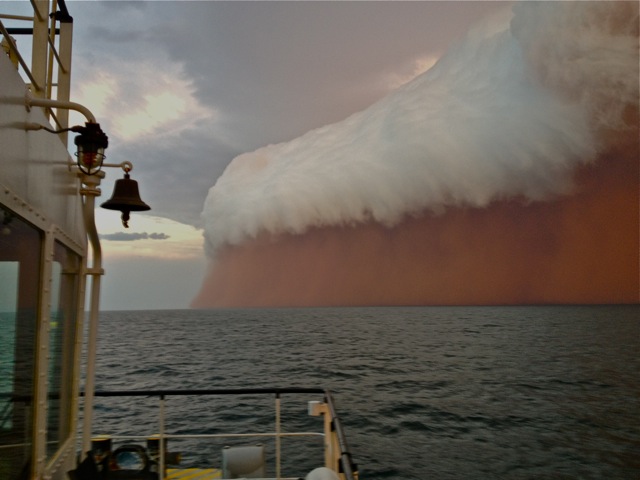|
By collecting dust in the source areas, I try to understand what are the effects of dust formation, entrainment and transport on the particles that make it “out to sea”..
By collecting present-day dust from the atmosphere, I try to ground-truth the inferences I make from wind-blown dust found in deep-marine sediments.
By collecting / monitoring dust deposited on the ocean, I try to understand the consequences and marine-environmental effects of dust deposition.
Together with Patrick De Deckker (ANU, Canberra, Australia) and Australian and German colleagues I was awarded an ARC grant to study Australian dust. In June 2007 we had our first field trip. There were four more field trips in September 2007, March 2008, February 2010 and June 2013. All in all we learned a lot from these field trips, especially about the enormous differences in source areas and their resulting dust emissions. It also gave us a fair understanding of how large dust outbreaks like the ‘red-dawn event’ in September 2009 can happen.
 |
(image © ABC news)
By collecting dust offshore NW Africa for the first time during expedition M41 (1998) with the German Research Vessel Meteor, we demonstrated that meteorology plays a key role on both the quantity and quality of the dust that is transported in dust outbreaks. Especially the altitude on which the dust is transported is of vital influence to e.g., the size of the dust. With the new array of instruments between Africa and the Caribbean, we can now show how “giant” particles (>100µm) can be transported across 1000’s (thousands!) of km across the ocean.
Dust outbreaks are obviously widely studied through satellite images, but one of the disadvantages of these studies is the lack of control on the altitude at which the dust moves. By using weather balloons that were launched from the ship, we have an idea about the vertical structure of the atmosphere and hence could define the layer of maximum transporting capacity. Thus we could show that it is the Trade-wind layer that carries the bulk of Saharan dust into the Atlantic Ocean, and not e.g., the Saharan Air Layer (SAL), which travels at much higher altitudes.
|
